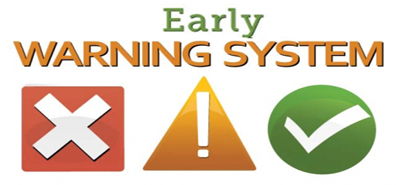How to Make The Best of Early Warning Systems?
“Time is money” in any given business enterprise and more so in any supply chain operation. The complexity and the scale of supply chain operations make it vital for issues to be tracked as early as possible, even before product completion. The slightest of delays in detecting quality errors can break the effective functioning of the entire process. It can lead to increase in warranty expenses, customer complaints and the brand image can suffer severely.
The biggest challenge for an organization is to identify, track and analyze the elements that hamper warranty efficiency. Warranty failure is a substantial expense. Apart from the direct costs there is cost of repair, replacement, operational cost and customer trust is also at stake.
With an effective early warning system at place, costs can be minimized and product failures can be tracked. Integrated predictive analytics can help in bringing about product and process enhancements.
The current approach towards identifying quality issues in the supply chain are statistical models. The problem with this approach is that it is reactive in nature; false alarms and a large number of cumulative defects before alerting are witnessed. Furthermore, the process is time consuming. It does not priorities issues on the basis of urgency and nor does it cluster reports into the various business functions that can help in implementation techniques and achieving results.
The need of the hour is a proactive early warning system (EWS) that can counter all the above challenges, reduce warranty costs, enhance brand image and optimize productivity.
The EWS analytics enables organizations to shift from a reactive to a proactive mode towards warranty solutions. It applies predictive analytics and integrates historical data with statistical data to highlight trends. It classifies and ranks issues on the basis of priority that can bring remarkable results all along the supply chain operations.
With an early warning system in place, key data in the warranty and quality chain can be integrated to track the product quality and the future performance of the product on field. More and more organizations are using predictive analytics at the product testing phase. When error trends are witnessed, quick corrections in the product quality can be made before the product goes on field. Reports, emerging trends, analyses and alerts can be presented to specific departments for amendments to be made.
Business case study
The Background
A leading global automotive OEM with an operational presence in close to 110 countries needed to develop robust analytics solutions and root-cause analysis to solve problems such as tracking failure trends, reducing warranty costs and enhancing customer satisfaction.
The Challenges
The organization witnessed inflating operational expenses while there was a dip in ROI. Warranty costs began to grow and the specific reasons for the downfall were hard to assess. Quality and supply chain professionals needed better techniques for an accurate root-cause analysis to examine the data and identify proactive techniques to manage the business processes more efficiently.
The Need
An early warning system with predictive analytics that can:
- Consolidate data from multiple departments
- Generate reports and daily updates for emerging issues
- Identify the root cause of failure patterns
- Priorities issues and rank the order of urgency
- Minimize warranty spend and project future expense
- Enhance customer satisfaction and collaboration
The Solution
Within 5 months of deploying an Early Warning System Analytics at the organization, the overall reduction in warranty costs was close to 4%. The early detection generated accurate root-cause analysis of product failures, which was leading to greater warranty spends.
The analytics enabled data segmentation into the workflow processes for actionable insights and business reports. It enhanced work quality, collaboration with internal and external stakeholders and suggested strategic directions for business and operational excellence.
The Benefits:
- Marginal warranty costs
- Faster problem identification
- Quick problem resolution
- Minimal rework
- Proactive quality management
- Greater customer success
- Lesser false alarms
- Actionable insights
- Enhanced product quality
- Scalable solutions
- Improved product awareness
- Project reports and trends
- Deeper customer collaboration and communication
- Improved identification of emerging issues
- Cost avoidance strategies
- Better designing of future products
- Configurable dashboard view of quality trends
- Advanced analytics and alert prioritizations
- Increased productivity
- Greater client value
- Lower overall operational costs
The early warning system proved to be a monumental step in safeguarding the Global Automobile OEM’s supply chain and manufacturing operations. Specific product failure trends helped to channelize costs appropriately. Not only did this ensure cost management but also improved customer satisfaction due to faulty product recall by the organization as a corrective measure. Lesser time and resource allocation was witnessed due to the integrated analytics that could generate weekly reports that was impossible to achieve through traditional statistical analysis.
Author Bio
Preethi Vagadia is the Marketing Executive worked in several process improvement projects involving the multi-national teams for one of the best companies based across the world. She has over 5 years of experience in Warranty management solution, and as a practicing manager of Business analysts successfully executing several projects in terms of Logistics management, Logistics Integration, Reverse logistics, Warranty software and Warranty claim management.


